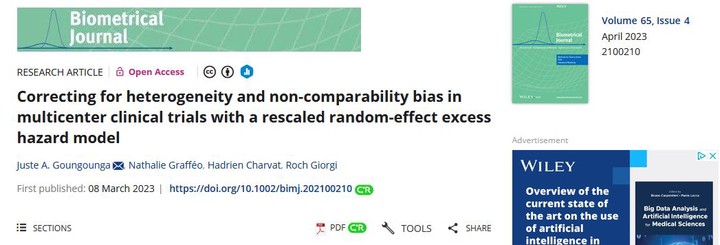Correcting for heterogeneity and non-comparability bias in multicenter clinical trials with a rescaled random-effect excess hazard model

Abstract
In the presence of competing causes of event occurrence (e.g., death), the interest might not only be in the overall survival but also in the so-called net survival, that is, the hypothetical survival that would be observed if the disease under study were the only possible cause of death. Net survival estimation is commonly based on the excess hazard approach in which the hazard rate of individuals is assumed to be the sum of a disease-specific and expected hazard rate, supposed to be correctly approximated by the mortality rates obtained from general population life tables. However, this assumption might not be realistic if the study participants are not comparable with the general population. Also, the hierarchical structure of the data can induce a correlation between the outcomes of individuals coming from the same clusters (e.g., hospital, registry). We proposed an excess hazard model that corrects simultaneously for these two sources of bias, instead of dealing with them independently as before. We assessed the performance of this new model and compared it with three similar models, using an extensive simulation study, as well as an application to breast cancer data from a multicenter clinical trial. The new model performed better than the others in terms of bias, root mean square error, and empirical coverage rate. The proposed approach might be useful to account simultaneously for the hierarchical structure of the data and the non-comparability bias in studies such as long-term multicenter clinical trials, when there is interest in the estimation of net survival.